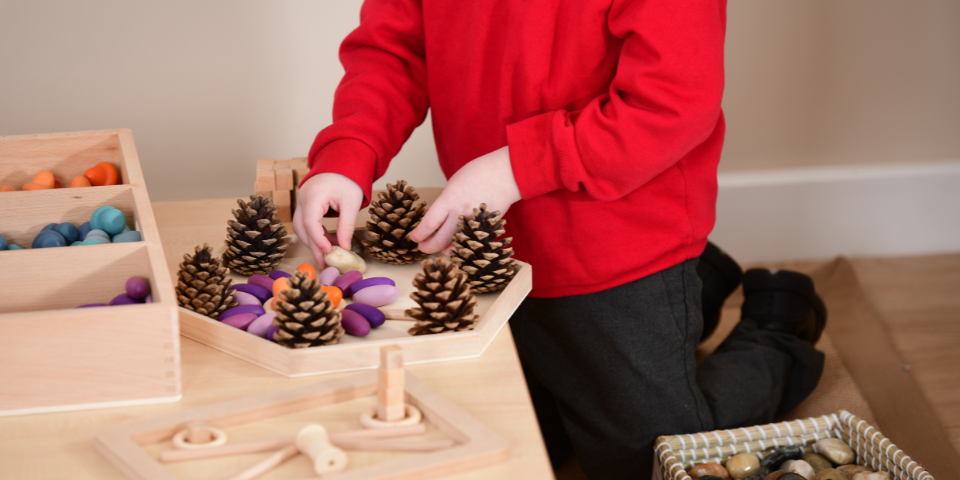Heuristic play is a very important element of child development. It can be observed in very young children as they explore, discover and learn through their own experiences with objects.
But what exactly is heuristic play?
This article will delve into the meaning of heuristic play. We’ll explore its origins and its potential for promoting a love of learning, a can-do approach, and fostering creativity and problem solving in children.
We’ll also highlight the benefits of heuristic play. From enhancing cognitive development to promoting problem-solving skills – heuristic play has a lot to offer.
You’ll also discover practical examples of heuristic play. We’ll provide tips on how to implement this approach in a classroom setting. So, join us as we unlock the power of heuristic play and its potential to nurture lifelong learners in the Early Years Foundation Stage.
What is Heuristic Play?
Heuristic play is a term first used to describe the exploratory play of toddlers with everyday objects. It was introduced to help make sense of what can initially appear to be chaotic or random behaviour in very young children. However, closer observation reveals that this play is highly purposeful, involving deep levels of learning and discovery.
Heuristic play thrives in well-considered environments that are rich in variety and full of opportunities for exploration. For young children, it’s about making things happen – understanding cause and effect through hands-on experiences.
Common heuristic play behaviours include:
picking up, putting in, taking out, piling, rolling, sliding, slotting, shaking, banging, dropping, squeezing, pushing, and pulling.
Definition & Meaning
The term heuristic play is an approach to children’s learning based on close observation of what young children naturally do. It was first used in the early 1980s by Elinor Goldschmied, Gwen MacMichael and Anita M. Hughes.
The word heuristic is derived from the Greek word ‘eurisko’ which means ‘serves to discover or reach understanding of.’ Which, given the right conditions, is exactly what young children do of their own volition.
Heuristic play explores how very young children handle, investigate, and experiment with objects and their environment as they work to understand and make sense of the world around them. This process begins in a highly multi-sensory way, before the development of language, and often involves actions like filling, emptying, piling, and stacking. As children begin to develop language, their play becomes more imaginative and symbolic. They start to wonder what else an object could be or what else they could do with it – a bowl, for example, might become a hat.
Though it begins in toddlerhood, heuristic play continues through early childhood and into adulthood, as exploration and discovery remain lifelong processes.
A Brief Overview of Heuristic Play
Heuristic play is distinct from Treasure Basket Play, which is typically planned for seated babies of approximately 5-10 months old, when the child’s dominant line of enquiry is: What is this object like?
Heuristic play begins at around 10 months of age, when children begin to become mobile and the dominant line of enquiry shifts to: What can I do with this object?
From 20 months onwards, as children develop language, their interests evolve again to: What can this object become?
These are the three stages of play with objects as set out by Anita M. Hughes in her book Developing Play for the Under Threes.
Heuristic play represents the next logical stage in a child’s development – moving beyond mouthing and exploring the nature of objects to engaging in repeated actions on objects, which lays the foundation for a lifetime of both living and learning.
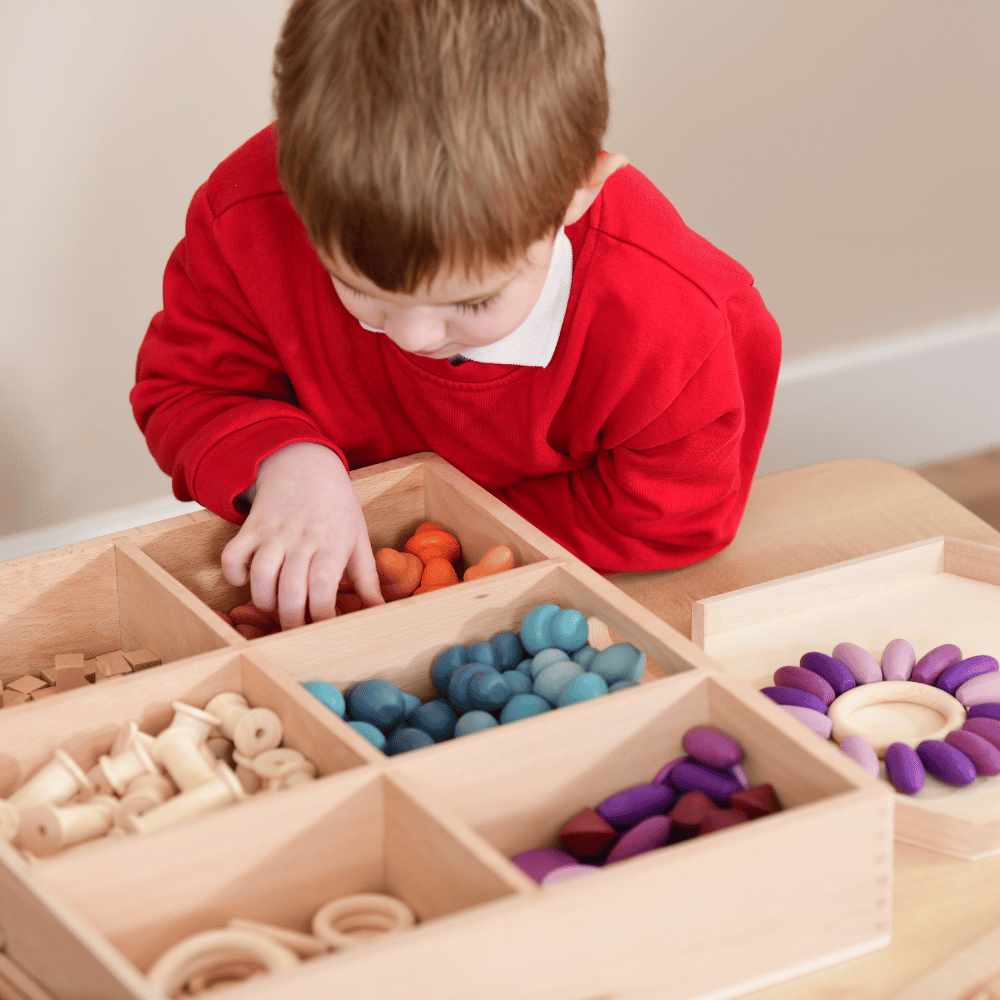
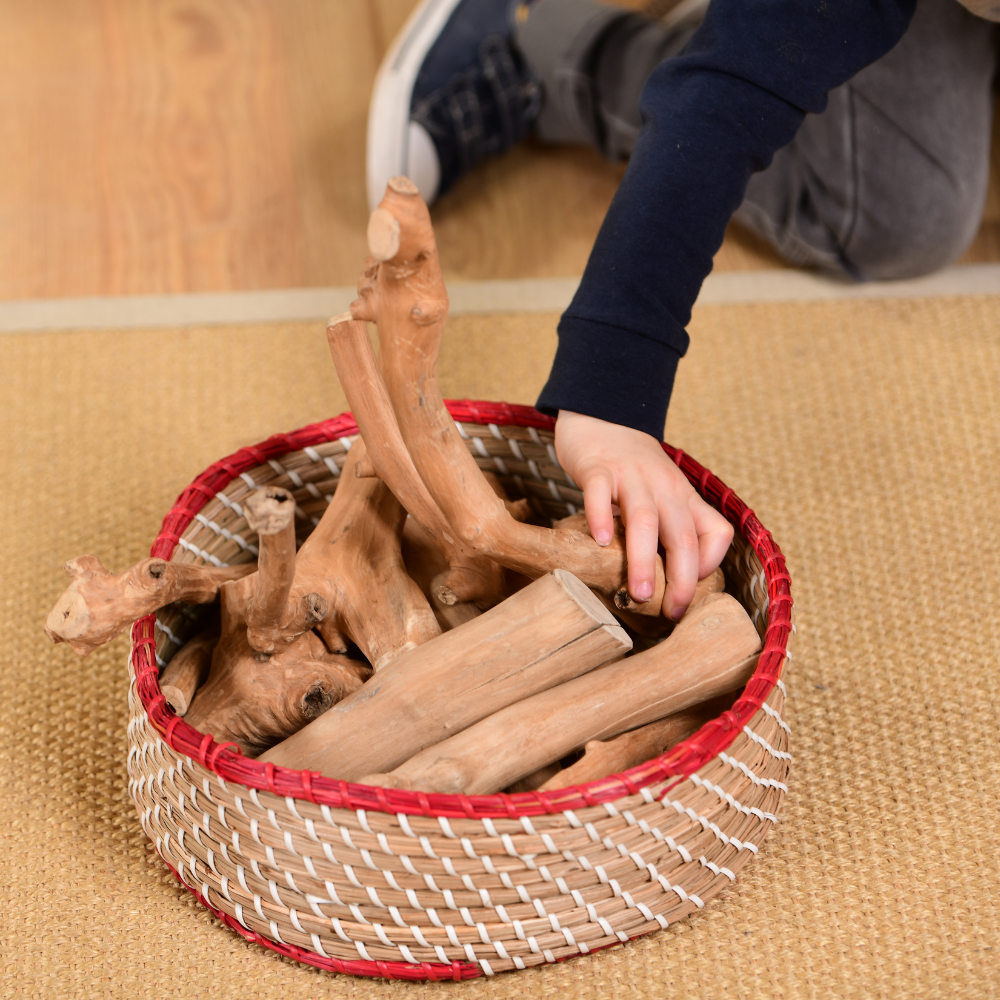
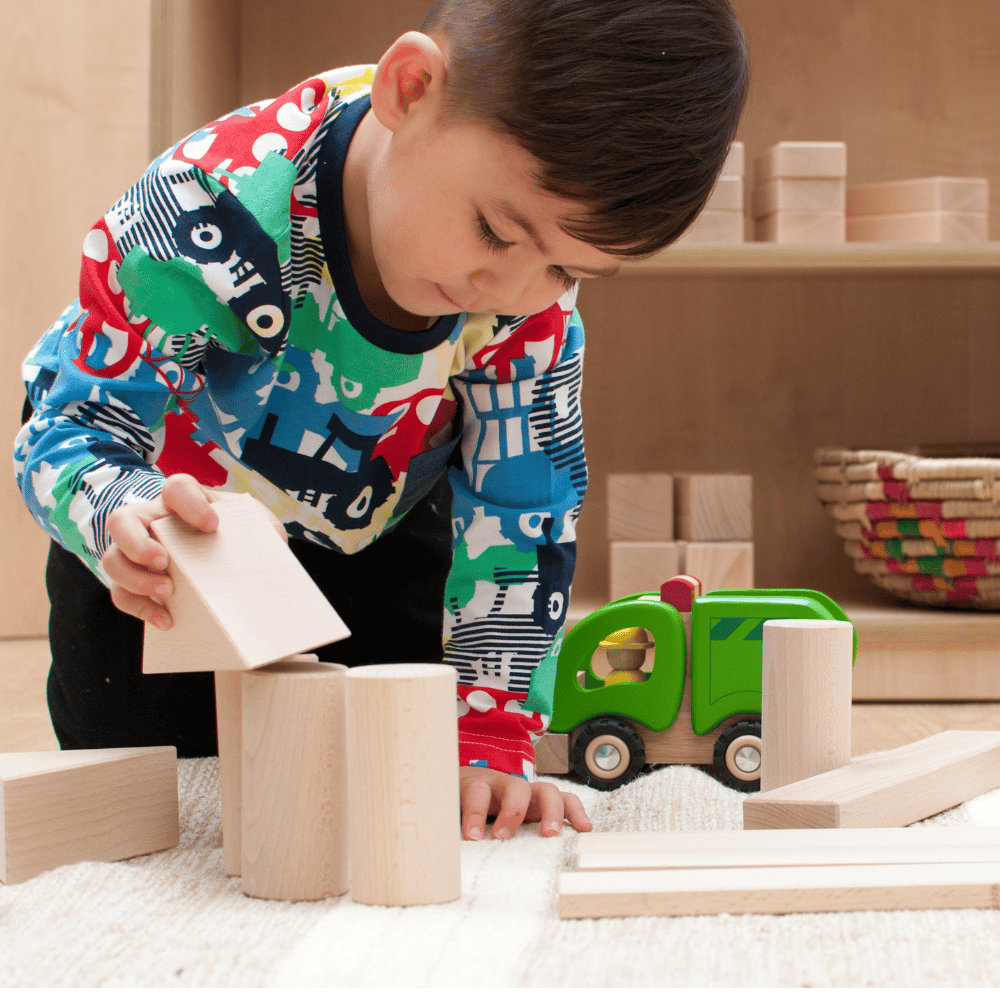
The Benefits of Heuristic Play
Heuristic play offers numerous developmental benefits for young children. It promotes a love of learning and supports the development of lifelong learning dispositions. Rooted in a deep understanding of child development – what children want to do and are capable of doing – it is an empowering approach that is fundamental to early childhood education.
A strong understanding of heuristic play is essential in early years practice, where critical skills, knowledge, and learning dispositions are established.
Focus & Concentration
Heuristic play can play a significant role in developing a child’s ability to focus and concentrate. Very young children have been observed engaging in this type of play with intense focus – what Professor Dr. Ferre Laevers describes as high-level involvement, often working at the limits of their capabilities.
By tapping into children’s natural drive to explore, we promote learning on their own terms, with intrinsic motivation at its heart. This lays the groundwork for children to become self-motivated, independent learners for life.
Learn more about children’s wellbeing and involvement and the work of Professor Dr. Ferre Laevers in our Strengthening Wellbeing & Involvement in the EYFS course.
Enhancing Creativity
Creativity flourishes when children are supported in an environment that encourages:
- Having a go
- Learning through trial and error
- Not being afraid to make mistakes
Heuristic play fosters exactly this kind of climate. Children are free to test ideas, explore possibilities, and pursue their own lines of enquiry – all core attributes of creative thinking.
There is a growing body of evidence that shows that if we are to prepare children well for life in the 21st century, then flexibility of mind to be creative is what our youngsters will need to thrive. This is the core of an approach to learning that acknowledges and maximises the potential of heuristic play.
Developing Problem-Solving Skills
Heuristic play also builds the foundation for problem-solving, laying the early groundwork for mathematical thinking and scientific understanding.
At first glance, children’s actions may appear repetitive or random. But when observed closely – and with insight, as Elinor Goldschmied recognised – we see that their play often follows an internal logic. Like scientists, children form theories, test them, revise them, and repeat. This process leads to greater skill, deeper understanding, and the development of critical thinking.
Fostering Independence
By understanding heuristic play, we can help promote independence. Children are naturally motivated to explore objects and their environment and nature – they are propelled by their own exploratory drive. When supported by sensitive adults, children learn to trust their instincts, make choices, and follow their curiosity.
A climate that fosters ownership, decision-making, and goal-setting helps children grow into confident, self-assured learners.
Encouraging Sensory Exploration
Young children are multi-sensory, hands-on learners. High-quality heuristic play offers a wide range of contrasting sensory experiences that deepen children’s engagement and awareness.
For example:
- The warmth of a wooden bowl contrasts with the cool feel of metal.
- The clang of a metal spoon on a metal bowl differs from the clack of wood on wood.
This variety stimulates the senses and supports rich, open-ended exploration.
Examples of Heuristic Play
A Child in Deep Involvement
One of the clearest examples of heuristic play comes from the work of Professor Dr. Ferre Laevers, who described high levels of involvement in young learners:
A young girl is seated with an adult close by and encouraged to play with a collection of pebbles of different shapes, sizes, weights, textures and colours. She picks up one stone, looks at it briefly, smells it and feels it in her hand, she then drops it and watches as it falls to the ground, hearing the sound it makes as it hits. She repeats the process a couple times. Watching and listening intently. She then picks up another one in her other hand repeats the process and drops it too, initially one stone at a time.
Her play progresses and she then begins to drop the stones simultaneously, and watches as they both drop to the floor either side of her, she repeats, again looks to the adults close by and smiles, contentedly, with a look of achievement, what I set out to do, a deeper understanding. Learning in action, ‘serves to discover or reach understanding of.’ Eureka!
Everyday Items as Tools for Play
Elinor Goldschmied encouraged practitioners to see the value in the ordinary – what she called the “wonders of ordinariness.” Everyday items can become powerful tools for heuristic play, helping children connect with the real world around them.
This approach is both universal and inclusive, offering rich learning opportunities for all children, regardless of background. Objects can be gathered from homes, schools, communities, and nature – making this form of play accessible and meaningful.
All it takes is the adult’s willingness to notice, collect, and curate these materials thoughtfully.
Structured Play Sessions
While heuristic play allows children a lot of freedom, structured sessions can be beneficial. Adults are essentially a facilitator, attentive, in the moment, and observant – avoiding unnecessary talk so as not to distract the child deeply absorbed in heuristic play. When the time comes to clear up, heuristic play sessions can be a great time to reinforce a choose it, use it, put it away approach involving the children – encouraging ownership, care and respect for the well-planned environment.
Nature-Inspired Heuristic Play
Be sure to connect heuristic play experiences with the natural world. This can easily be done by collecting natural objects, pinecones, shells and pebbles – encouraging wonder and curiosity. Using locally sourced natural materials adds richness and meaning – connecting children with their community and helping them notice seasonal change, patterns, and textures in their own environment through heuristic play.
Open-Ended Play Scenarios
As children seek out and are encouraged to engage with heuristic play experiences and begin to wonder what they can do with objects, there can be no failure. As the children explore a theory, it works or it doesn’t, an unexpected or different outcome leads only to greater understanding rather than failure. This reinforces a can-do, growth mindset – a foundational message that builds confidence and motivation.
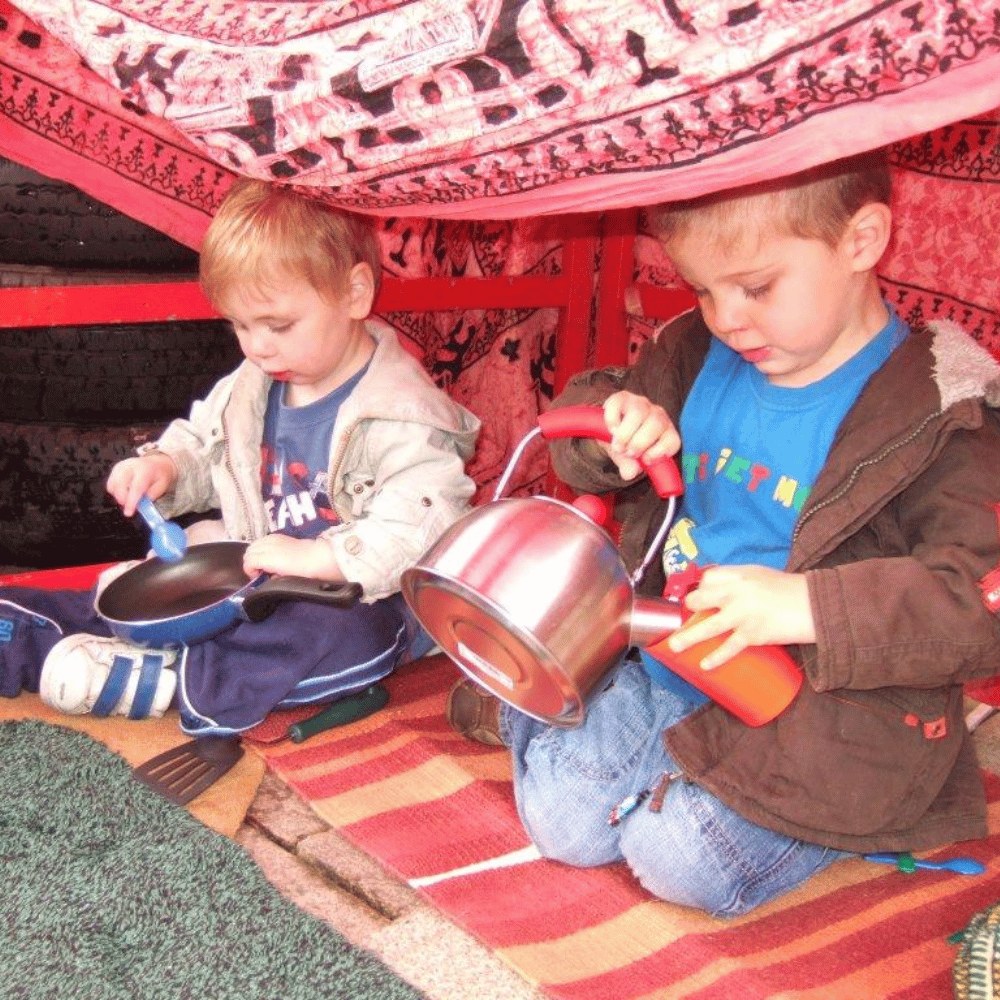
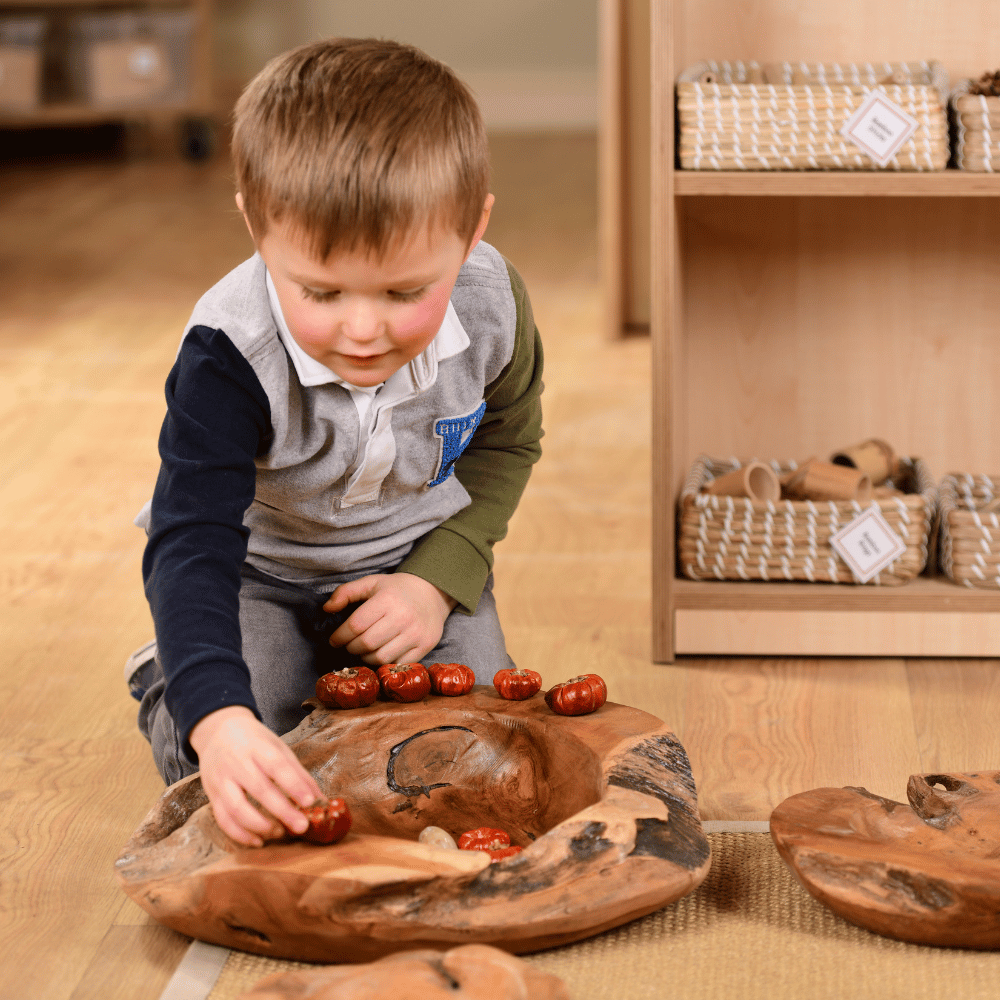
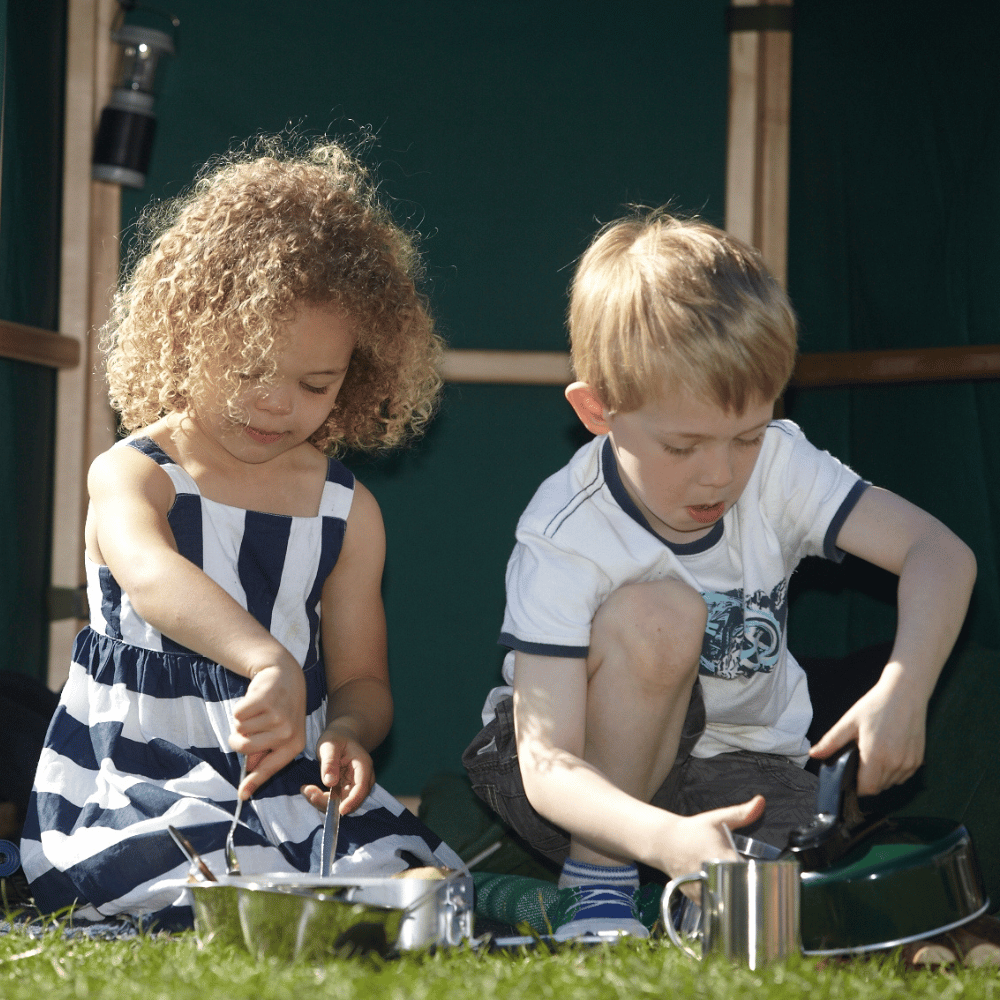
How to Implement Heuristic Play
Collecting Resources
Begin by carefully collecting and curating resources for heuristic play. Thoughtfully consider what children might do with each item – keeping in mind the general principle that simple, open-ended resources offer the most possibilities for discovery.
Some resources will be offered as part of the everyday environment, the Continuous Provision, whereas others, possibly in drawstring bags, can be used to enhance and/or enrich children’s heuristic play when appropriate. This would be based on adults’ observations of children’s current interests, needs, or developmental stages.
Give children enough time to become engrossed in the play, an hour without interruption is a good benchmark.
Setting up the Environment
The environment plays a crucial role in supporting heuristic play. It should be:
- Inviting and visually calm
- Well-organised to promote independence
- Flexible to allow for child-led decisions
Resources can be organised either on the floor or on solid shelving in a range of baskets. Furniture of the correct height will enable children with increased mobility to move though the spaces, offering surfaces to stand at or sit at while engage in their explorations. Attach mirrors as another great way of bringing the world to our youngest children.
At Early Excellence, we are strong advocates for Continuous Provision, designing complete classrooms and outdoor environments that enable heuristic play. Our approach ensures that learning is driven by children’s interests, allowing them to engage with resources and materials at their own pace and engage in meaningful learning through hands-on exploration.
Selecting Appropriate Materials
A variety of simple open-ended resources offer children the greatest opportunities for learning through heuristic play experiences. Consider different materials, different sizes, weights, colours, shapes and textures.
As Simon Nicholson suggests in his theory of loose parts, ‘in any environment, both the degree of inventiveness and creativity, and the possibility of discovery, are directly proportional to the number and kind of variables in it’.
In short, variety is key.
Materials can include:
- Natural objects (pinecones, shells, stones, leaves)
- Household items (wooden spoons, pots, fabric)
- Recycled objects (cardboard tubes, tins, lids)
- Open-ended resources (wooden bricks, rubber balls, metal rings)
- Containers for filling, emptying, and transporting
Resources can be grouped by material, texture, or function to support children’s schema play and support purposeful engagement.
What is the Adult Role in Heuristic Play?
In heuristic play, the adult’s role is to carefully prepare a safe, inviting environment rich in open-ended resources, then take on the role of an attentive observer. By offering time, space, and variety, and intervening only when necessary, adults allow children to follow their own curiosity, test ideas, and make discoveries. This sensitive balance of preparation and unobtrusive support fosters independence, deep involvement, and a genuine love of learning.
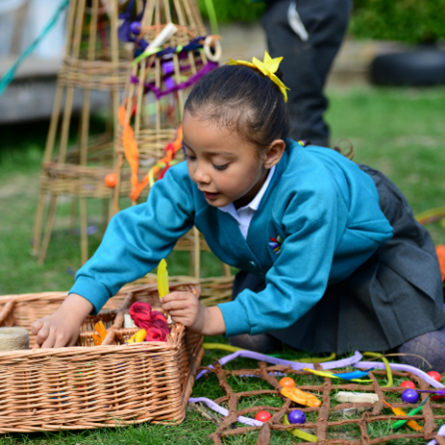
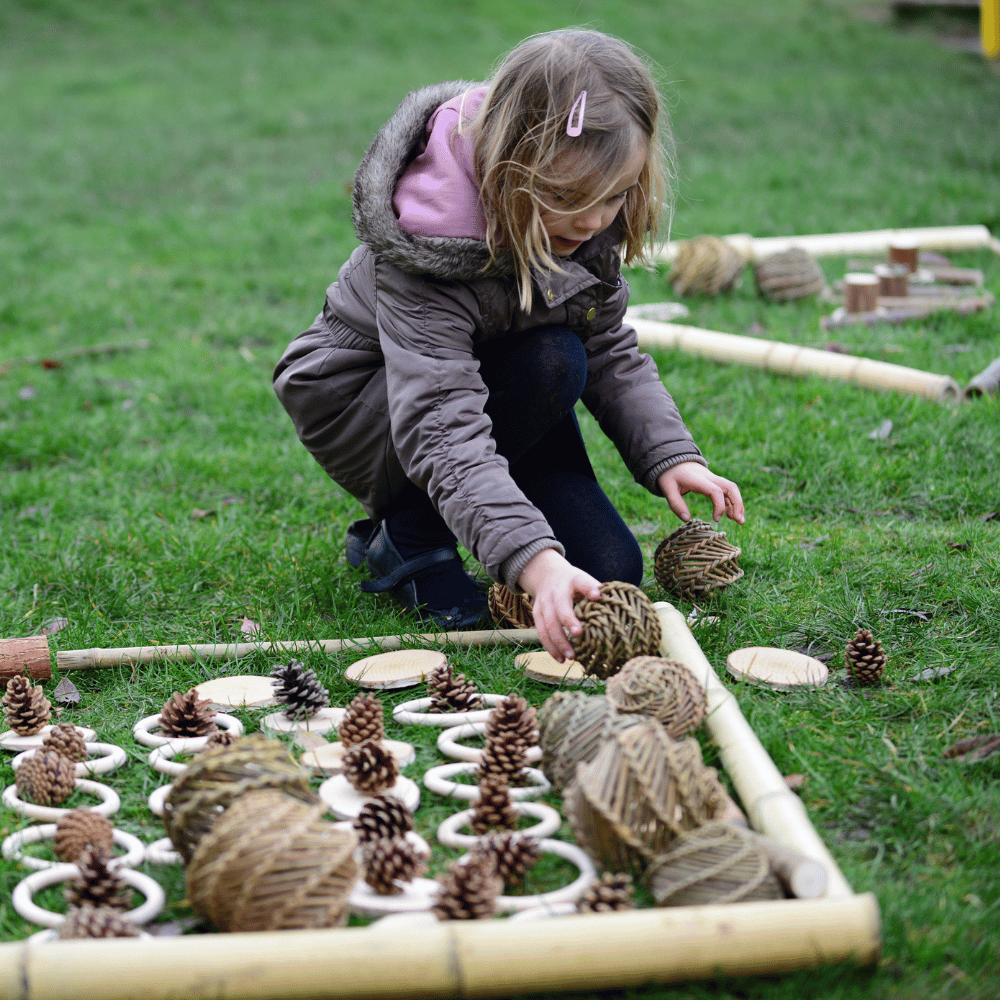
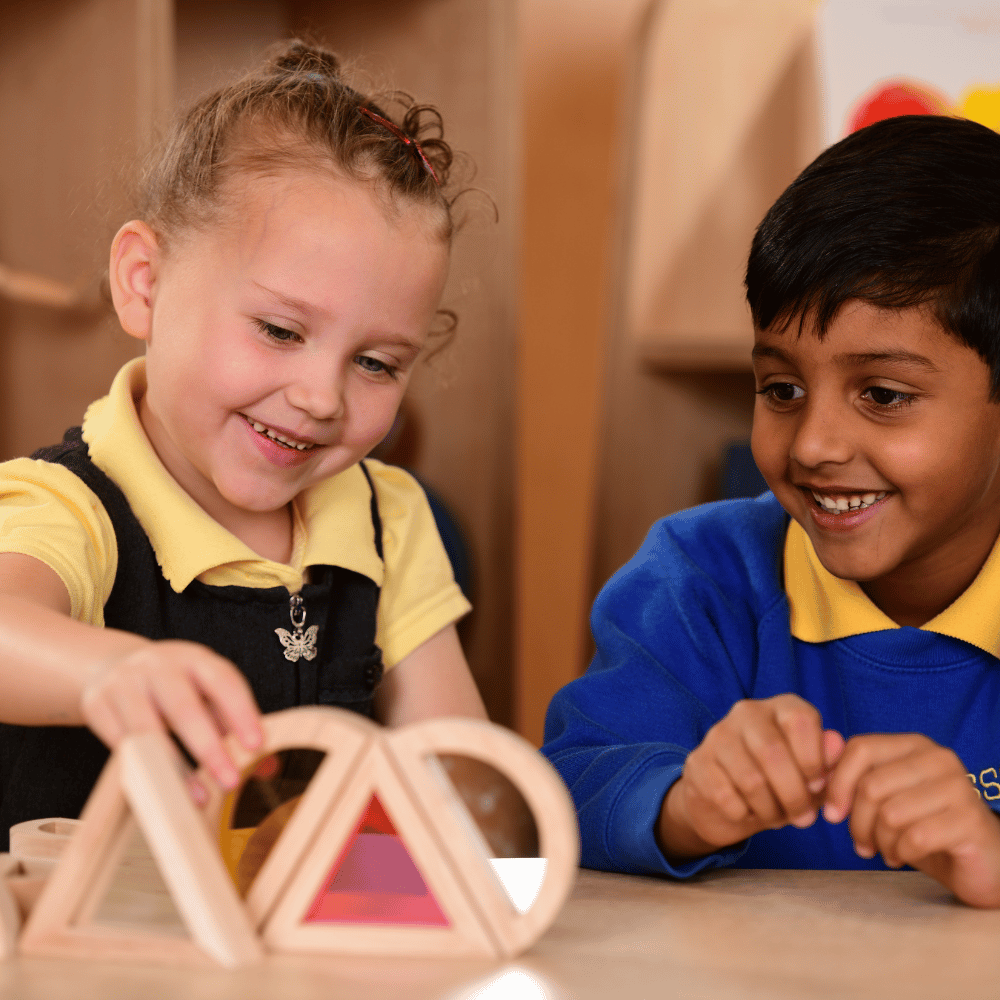
Further Reading
- ‘People Under Three’ – Elinor Goldschmied and Sonia Jackson.
- ‘Developing Play for Under 3s: The Treasure Basket and Heuristic Play.’ – Anita M. Hughes.
- ‘Birth to Three Matters.’ – Edited by Lesley Abbott and Ann Langston.
- ‘Working with the Under 3s: Responding to Children’s Needs.’ – Edited by Lesley Abbott and Helen Moylett.
- ‘Perspectives on Play Learning for Life.’ – Avril Brock, Sylvia Dodds, Pam Jarvis and Yinka Olusoga.
- ‘Understanding Child Development: Linking Theory and Practice.’ – Jennie Lindon.
Find Out More
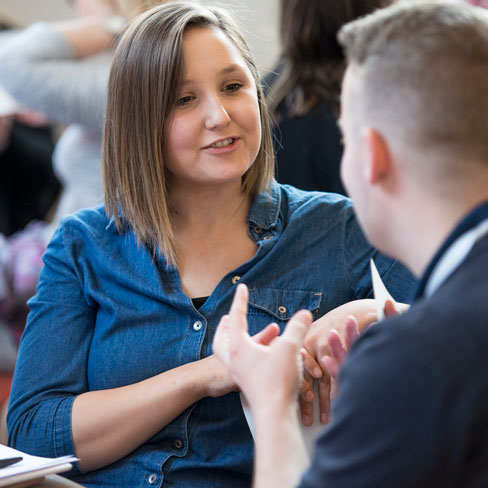
Join our Strengthening Wellbeing & Involvement in the EYFS course to gain a deeper insight into how best to support children holistically.
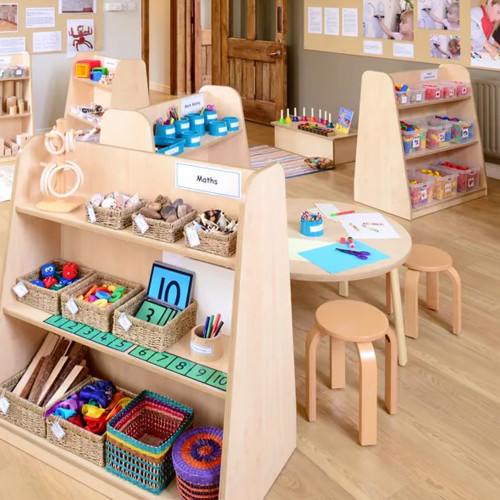
Explore our carefully curated, fully resourced Complete Classrooms to develop an outstanding indoor learning environment for 2-3 years, 3-4 years, 4-5 years and 5-7 years.
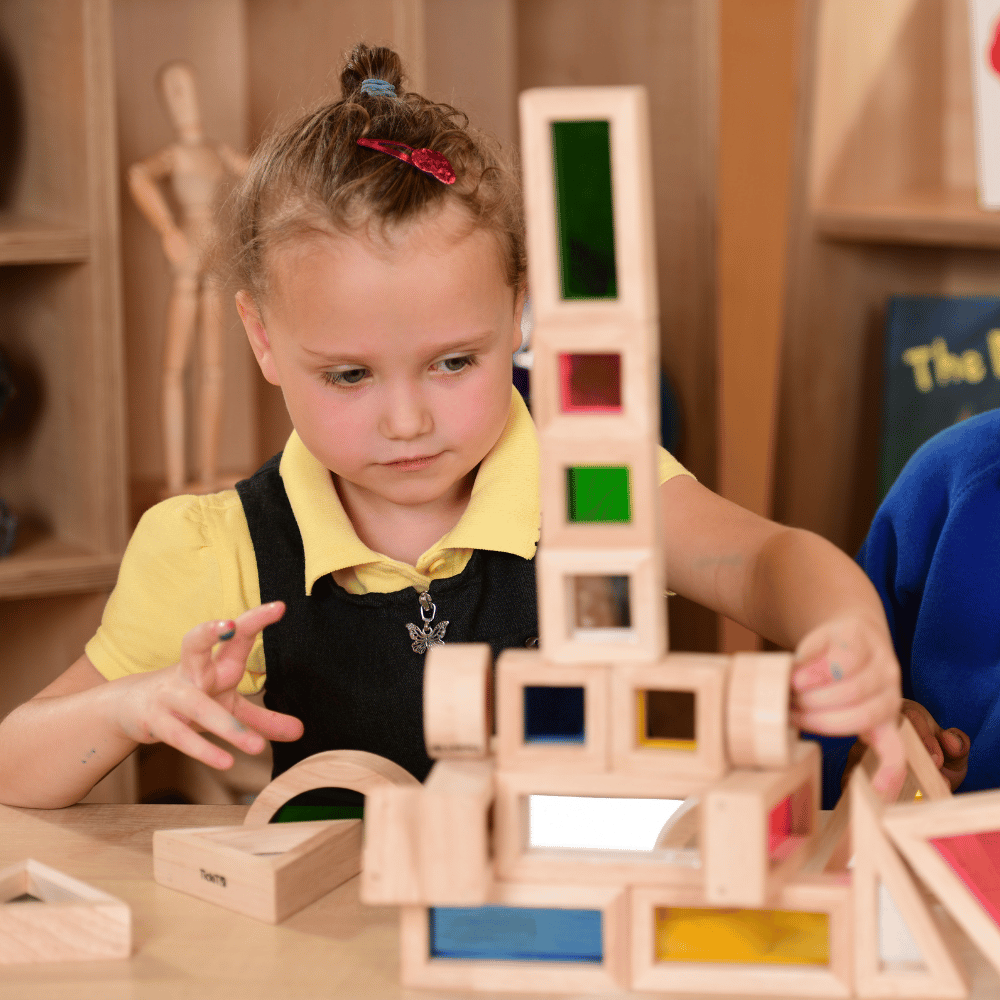
Support open-ended exploration and imaginative play with our range of open-ended block resources for both Early Years and Key Stage One classrooms.

